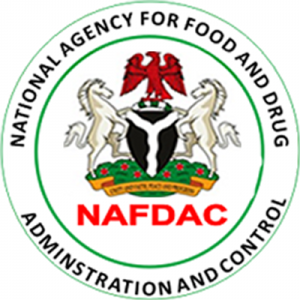How To Establish Food Manufacturing Plants In Nigeria
 Shippers Guide is the learning page of MMS Plus. Here we answer the five W’s and H of several issues in the shipping industry. This week’s edition unveils the guidelines in establishing food manufacturing plants in Nigeria.
Shippers Guide is the learning page of MMS Plus. Here we answer the five W’s and H of several issues in the shipping industry. This week’s edition unveils the guidelines in establishing food manufacturing plants in Nigeria.
The following guidelines are for the general public and particularly industries that want to engage in food manufacturing. These guidelines prescribe the minimum good manufacturing practice requirements for the facilities, controls to be used in the manufacture, processing and packing of products to ensure that they meet quality standards.
The guidelines should also apply to persons that may engage in some aspects of a manufacturing process e.g. packaging. It is necessary to emphasize that no food product should be manufactured, imported, exported, advertised, sold or distributed in Nigeria unless it has been registered in accordance with the provisions of Act Cap F33 LFN 2004. Consequently, a food product shall not be manufactured in Nigeria unless the factory is inspected and certificate of recognition is issued by NAFDAC.
ORGANIZATION AND PERSONNEL
• There should be an adequate organizational structure that clearly defines
a) Qualification of key personnel
b) Responsibility
• There should be an adequate number of qualified personnel to perform assigned duties.
• Each key personnel engaged in food manufacturing should have
a) Adequate education
b) Experience
• The quality control and production units shall be distinct organizational units that function and report to management independently of each other and of all other functional units.
• Personnel should wear protective apparel/gears, such as head, face, hand, and arm coverings to protect products from contamination.
• Personnel should practice good sanitary and hygienic habits.
• All personnel should have access to medical treatment and checks for communicable diseases and the records should be kept.
• There should be adequate training for employees in the particular operations that they perform
• Consultants advising on any form of manufacturing process should have sufficient education, training, and experience to advice on the subject for which they are retained.
PLANT AND FACILITIES
• Building(s) used in the manufacture, processing and packing of food products should be adequately located, constructed and of suitable size to facilitate cleaning, maintenance and proper operations as appropriate to the type and stage of manufacture.
• The building should have adequate space for the orderly placement of equipment and materials to prevent mix-ups between different materials.
• The building should be designed to maintain orderly flow of personnel and materials.
• There should be defined areas of adequate size to accommodate the different operations in a logical order of production flow corresponding to the sequence of the operations. The operational areas should include;
a. Cloakroom/ Toilet facilities (which should not open directly into the production area)
b. Raw Materials Store
c. Packaging Materials Store
d. Production Room
e. Finished Products Store
QUALITY CONTROL LABORATORY
• Floors, walls and ceilings of smooth, hard surfaces that can be easily cleaned and disinfected routinely should be provided.
• Ceiling boards should be made of non-asbestos and non flaking material.
• Windows and entrance doors should be screened with insect-proof netting and the doors should be self closing to prevent contamination and be constructed in such a way as not to trap dust.
• Adequate lighting should be provided in all areas to facilitate easy identification of materials, cleaning, maintenance and proper operations.
• Adequate ventilation, cooling and exhaust systems should be provided where appropriate to minimize condensation in all the sections and in high risk food manufacturing appropriate air level purification should be put in place at the required section.
• Pallets or shelves (not wooden) should be provided for storage of materials in the raw materials store.
Cold Storage:
• A cold room should be provided for materials (raw material, packaging material or finished product) that require special storage conditions and should have the following features:
a. It should be an enclosure fitted with air cooling/freezing facilities.
b. A thermometer should be installed such that it can be read off without opening the cold room.
c. A temperature monitoring chart should be kept to ensure that the cold chain is constantly maintained.
d. A stand by generator should be installed as alternative power source.
e. Illumination should be provided in the cold room.
PRODUCTION SECTION
a. In production section where water forms part of the production process, the walls and floor should be made of easily cleaned and disinfected non shedding durable material and should have smooth surface.
i. A functional air conditioner or cooling system shall be installed in this room to enhance ventilation. However, for production rooms where heat and possibly dust from powdered raw materials, exhaust fans and (or) dust extractors shall be used to enhance ventilation and remove dust in this room.
ii. Illumination shall be via electric lighting and the room shall be sufficiently lit.
iii. Production equipment installed in this room should allow for smooth flow of production process and movement of personnel.
b. Finished Product Store:
This room shall be used for the storage of the finished products. Depending on the nature of the finished product, this room could be a dry store, cool room or cold room. Other features required in this room shall include;
i. The room shall be adequate in size for its intended use.
ii. Illumination shall be via electric lighting and the room shall be sufficiently lit.
iii. Depending on the nature of the product ventilation shall be via air conditioners or exhaust fans or limit of purified air system.
iv. The floor should be made of easily cleaned and disinfected non shedding durable material and should have smooth surface.
v. Storage of finished products shall be on pallets or shelves (not wooden) of sufficient strength to carry the weight of the products. The arrangement should allow for easy cleaning and movement of personnel.
vi. Self closing doors and windows should be screened with insect-proof netting.
vii. There should be provision for quarantine and approved products.
viii. Factories sited in commercial areas are unacceptable.
• The factory can either be a purpose – built structure or a suitably adapted building.
• The factory shall be constructed of cement or concrete and not made of wooden or prefab materials.
• The size must be adequate for its intended use to facilitate cleaning and proper operation.
• The facility shall be fenced round with block walls of at least five feet high to prevent external interference and should be plastered.
• The factory shall not be sited less than 100 meters from a refuse dump, abattoir, graveyard, oil depot (petroleum and vegetable), canal or cement factory.
EQUIPMENT:
The design, material, construction, location and maintenance of equipment should be such as to make it adequate and suitable for its intended use. Its layout and design must aim to minimize the risk of mix-ups and permit effective cleaning and maintenance in order to avoid cross contamination, build-up of dust, dirt, food particle or any other contaminant that can affect the quality of the product. The parts of the equipment that make contact with products should be made of non-toxic/non-reactive materials such as food grade stainless steel etc.
WATER TREATMENT PROCESS:
Water which is used in the production of food products (production Water), washing of production equipment (Operation water) should be treated water and the facilities required should include the following;
• The source of water shall be either via public mains or spring or borehole of not less than 150ft depth.
• The distance of the borehole from the nearest soak-away pit or septic tank should not be less than 50 meters.
• The borehole shall be fitted with a submersible pump of adequate power to pump the raw water out of the borehole.
• A raw water tank and treatment tank shall be provided which should be made of treated PVC, stainless steel or galvanized steel. In case of galvanized steel, it shall be coated internally with food grade rubber paint.
• Industrial modules containing sand bed and activated charcoal shall be provided.
• A treated water tank shall be provided should be made of treated PVC, stainless steel.
• A set of serial micro filters mesh of 5micron, 2 or 1 micron and then 0.5 micron pore sizes shall be provided.
• An industrial size UV sterilizer shall be provided at required points in the water treatment process.
• The Treatment process shall comprise of;
• Disinfection: This process is carried out either through chlorination at 2 – 4 parts per million (ppm), ozonation via an ozonator apparatus, pH adjustment, ion exchange, distillation or reverse osmosis.
• Filtration: This process is achieved by passing the water through sand bed filters and then through activated carbon filters to remove the chlorine, colour, odour and taste from the water.
• Sterilisation: This is achieved by passing the water through and industrial size ultra violet sterilizer to kill off any other microbes that may have escaped the disinfection stage.








